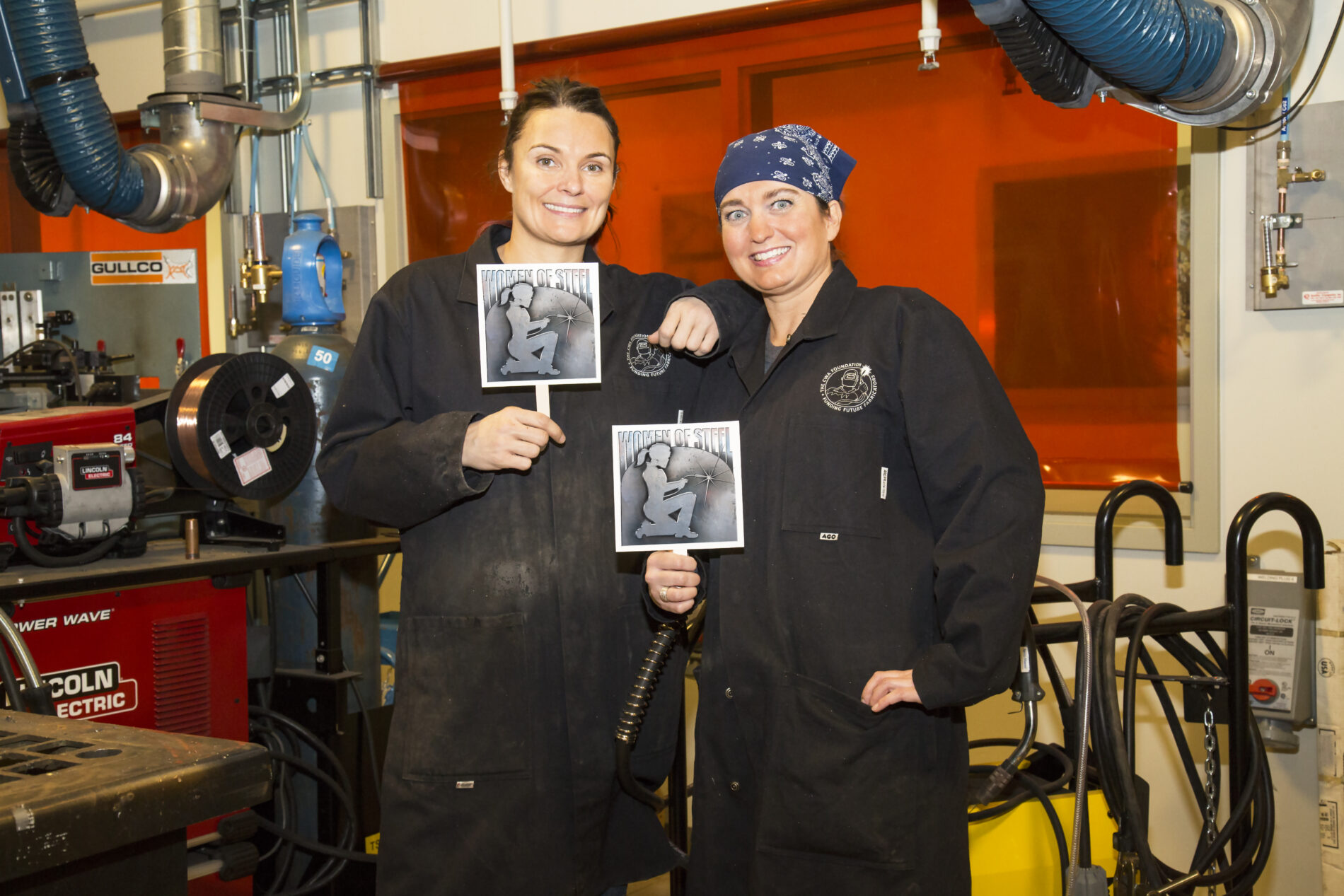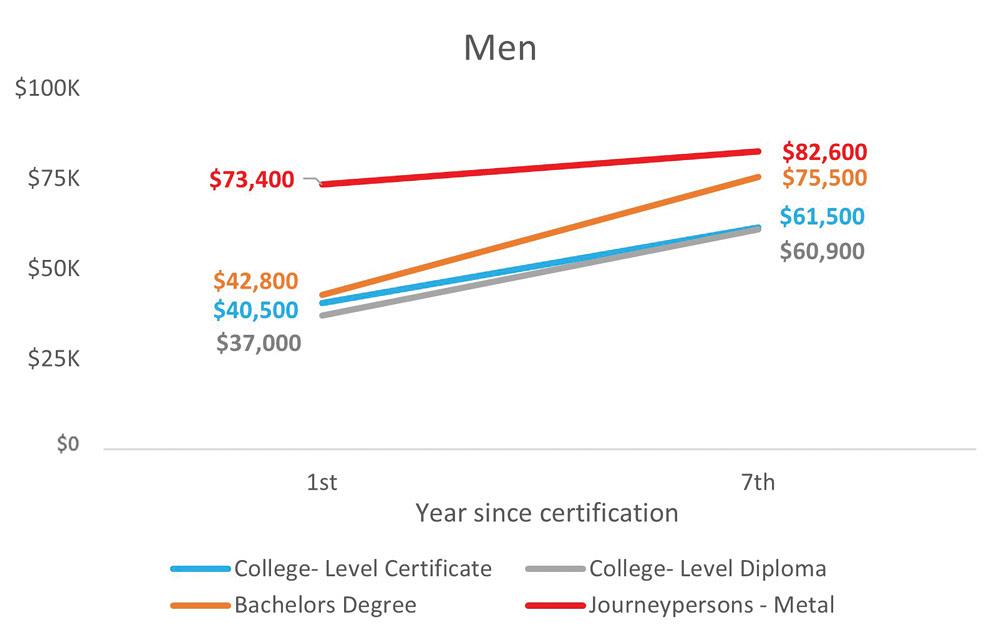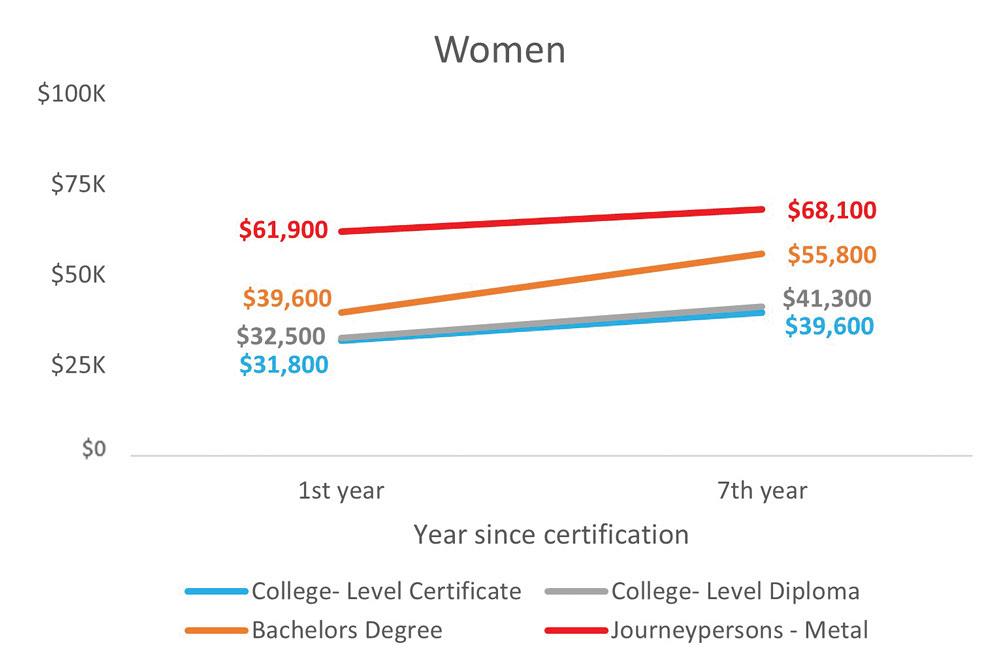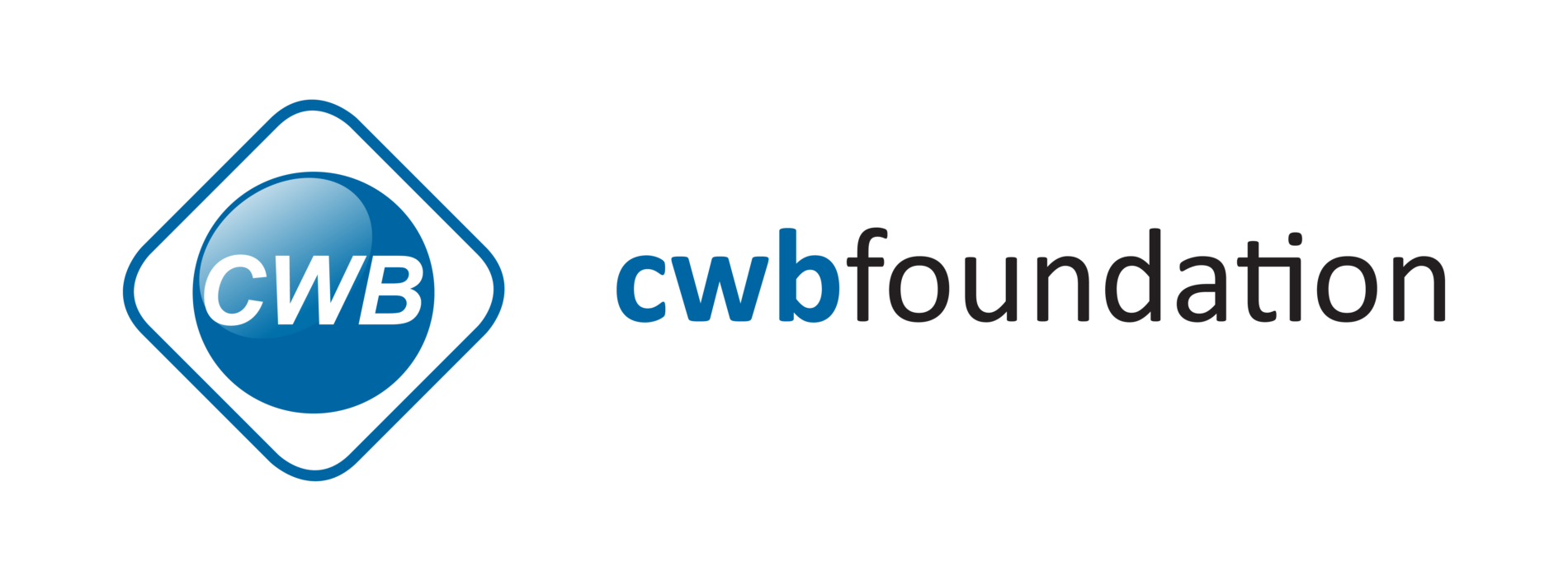
July 08, 2021
How engagement can drive more women into the trades and remove the wage gap issue
There has never been a better time to embark on a career in the skilled trades. The current shortage of skilled trades workers in Canada, along with the need for skilled workers to support industries that will drive Canada’s economy, means that there are and will continue to be rewarding, well-paying, and fulfilling jobs in the skilled trades.
This is especially true with welding. According to the Canadian Apprenticeship Forum (CAF), from 2020 to 2024 more than 155,000 new journeypersons will be required to sustain workforce certification levels across Red Seal trades in Canada. Welding is one of the trades that will require a greater number of apprenticeship registrations to meet future demand.
Economic competitiveness is one of the reasons that the CWB Welding Foundation works to raise awareness of welding as a desirable opportunity for women through our Women of Steel programming. The Women of Steel campaign aims to support women in welding, through strategic engagement programs, both virtual and hands-on learning, that connect introductory welders to mentors. The campaign provides learning opportunities that foster education, growth, confidence, and experiences for women from across Canada interested in exploring potential welding career options while learning about the trade.
The Wage Disparity Explained
However, the CAF reports that “there is a significant disparity in income between male and female apprentices” and that ”male apprentices earn higher wages than female apprentices both two years prior to certification and at the year of certification.”
This disparity is also noted in a recent report by the Canadian Labour Market Information Council (LMIC) and the Education Policy Research Initiative (EPRI), which examined the earnings potential of men and women with trades certificates as compared to those with postsecondary degrees and diplomas.
In 2018 about 4 per cent of people working in the industrial, electrical, and construction trades category, which includes welding, were women. In general, the wage gap for women in the trades is among the highest among all occupations. Women in skilled trades make on average 47 per cent of what men earn based on earnings data collected from 2009 to 2016. In the skilled trades, the gender pay gap is largely attributed to the fact that men tend to work in the higher paying trades such as welding, while women are over-represented in the lower paying trades, such as hairdressing.
The gender wage gap is the difference in earnings between men and women in the workplace. Although many countries have enacted measures to combat the wage gap, differences in wages between men and women remain a reality today in Canada and globally. Leading causes of the gender pay gap include gender segregation in jobs, differences in educational attainment, caregiving responsibilities that fall heavily to women, a lack of pay transparency, discrimination, and bias. In addition, Indigenous, visible minority, disabled, and newcomer women have a higher wage gap than white men working full time.
According to Statistics Canada, differences in the types of occupations men and women choose across industries explained nearly 40 per cent of the gender gap in 2018. Men are more likely than women to work in construction; manufacturing; and mining, quarrying, and oil and gas extraction—three sectors with high wages. Women, in contrast, tend to work in fields such as teaching, social work, nursing and other health-related occupations, clerical or other administrative positions, sales, and services—fields with lower wages.
How Welding Helps

Average earnings of PSE Graduates (Cohort 10) and Journeypersons in Metal Trades (Cohort 9).
Women who work in the higher-paying trades like welding fare much better, with those in the metal trades making 84 per cent of what men earn in their first year of work. In fact, women’s average earnings in the metal trades are highest among all post-secondary students in their first year after graduation ($61,000), making a career in the metal trades a highly desirable option.
Although welding is one of the highest earning categories in the skilled trades, women who are welders still have a significant wage gap to their male counterparts. Women in our Women of Steel network tell us that, in their experience, welding is a lucrative, rewarding, and creative occupation. But we know that more needs to be done to support women in pursuing skilled trades such as welding and STEM-related professions.
One of the key factors to improving the gender wage gap is getting more women involved in male-dominant fields such as the skilled trades and STEM occupations. Thankfully, there are numerous organizations and initiatives focused on raising awareness of the skilled trades amongst women and to support their pathways to employment.
Governments have a role to play in making sure that skilled trades education, apprenticeship, and training stays on the agenda. National organizations such as Skills/Compétences Canada celebrate the trades and encourage students to explore trades career opportunities. Apprenticeship organizations such as the CAF are addressing the issue from a national strategic perspective, while other organizations, such as the BC Centre for Women in the Trades, focus on regional/provincial environments. At the education level, many colleges and training institutions offer programs tailored to women.
How You Can Help
Employers are also part of the solution. Many of the organizations that the CWB Welding Foundation works with have recruitment campaigns, workplace mentorship programs, and other supports to help women thrive. And women themselves are taking action by creating social media groups and mentoring networks so they can share their experiences and support each other.
As you can see, there is much being done to support women in the trades and to bridge the gender wage gap. The CWB Welding Foundation will continue to be an advocate, encouraging women to consider welding and seeking out other like-minded organizations to amplify our efforts.
If you are an employer who wants to find young, talented women to grow your business, or if you are a woman in the welding trade who wishes to mentor young women, check out some of our success stories on social media with the #WomenOfSteel hashtag, or visit our website to learn about how you can get involved at www.cwbweldingfoundation.org/wos.
By Maria Hypponen is marketing and communications lead, CWB Welding Foundation, and Ola Batruch is marketing analyst, CWB Group.
Sources on quoted statistics available upon request.

Average earnings of PSE Graduates (Cohort 10) and Journeypersons in Metal Trades (Cohort 9).
